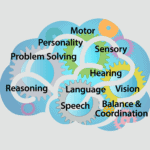Table of Contents
*This post may contain affiliate links. As an Amazon Associate we earn from qualifying purchases.
There are 3 underlying factors to experiential marketing success. I have consistently applied these concepts when creating campaigns as this brand building strategy has evolved.
I began my career in marketing creating product sampling and special events for major brands way back in the ‘80s.

Understanding the psychology of engagement and how it affects behavior is vital to creating marketing and promotional strategies that shift brand perceptions and influence purchase activity.
Today, with so many digital channels available, effectively applying experiential marketing concepts across traditional and social media channels achieves large-scale behavior change.
What does your brand do for people? How do they feel when they use your product or service?
Words alone can’t explain it. Humans do things based on how they feel. Feelings connect to emotions that shape our behaviors. Ultimately we rationalize our decisions based on how something or someone made us feel.
1.Connect The Brand’s Essence With A Feeling
The Brand Essence is why a company began their business in the first place. It’s how they serve the world at the highest level. Sounds pretty heady, right?
Think about it. Every ‘successful’ founder had a cause they began with. A consumer pain point they set out to solve.
Successful products or services take on a life of their own. Maybe it’s the way the founding team worked to launch, grow and sustain the brand . Their natural enthusiasm and belief in the product may have created emotional connections.

Perhaps it’s the overwhelming problem that was solved when consumers used the product. At the core of their success is that they were selling how the felt about their brand.
As brands grow the new larger organization tends to sell products, not feelings.
For example, Apple under Steve Jobs, and the organization’s current successors, understood this.
Back in the 80’s, Steve Jobs was removed from the company. The new management team lost this brand essence. The new team sold a product, not a feeling.
They brought Jobs back. Now, every product they launch is an experience. As proven time and again, Experiential Marketing naturally creates Trust and Loyalty.
The world is wide open for reimagined products and even industries. Customers feel it. They want to be a part of it. Their imagination is ignited together with the feeling they have for a brand.
For Experiential Marketing to work, it has to capture a feeling. Behaviors are not changed with words, they are changed with a feeling that leads to an emotional response.
2. Creativity Starts with A Revelation
Lean Cuisine sales dropped 20% over a two-year period. The shift in consumer purchase habits were a result of consumer behavior change.
A general rejection of ‘diet’ brands by consumers, and their shunning of processed foods in favor of fresh foods, caused the downward trend.
When faced with this massive decline, Chris Flora, Brand Manager of Nestle USA, was quoted as stating:

“for us to really thrive in this marketplace we wanted to find that brand soul.” Rather than using the new ads to simply tout Lean Cuisine’s new food options, “we want to really connect with our consumer … and have that empathy.”
The brand took bold moves. Shutting down their ad campaign for 18 months while they performed a product overhaul.
A new product line was launched touting organic ingredients, high protein and “freshly made, simply frozen” was communicated on packages to overcome the processed food perception.
Here is where they brought it all together getting to the essence of their customer’s connection with the brand. The set up a display in Grand Central Station in NYC.
https://youtu.be/HGYUiLxoJFA
Woman were faced with the prospect of stepping on the scale, but instead asked to weigh what really matters to them. The response touched each participant, each viewer of the exhibit, and on a much grander scale, all that witnessed the experience in many forms of media.
Kudos to 360i the agency that created this experience. For their client they generated:
‘6.5 million views within the first week, and resulting in a 428% increase in social mentions and a 33% increase in positive brand perception.
The campaign was an integral part of Lean Cuisine’s holistic turnaround in product and strategy and contributed to the brand seeing its first sales increase in nearly six years.’
What is experiential marketing? Connecting with a feeling establishes an emotional connection to change behavior. Media creates scale to turnaround a brand.Well done!
3. Connect With The Feelings Of A Community
According the the famed management consultant and author, Peter Drucker:
“The purpose of business is to create and keep a customer”
In the Lean Cuisine example the team took the time to look at their product, reexamine their relationship with their best customers, and test experiential marketing as a new way to change behavior.
Depending on the makeup of your best customer, aka your community, experiences may have to be brought directly to them.
Producing an Experiential Marketing Tour is often the solution when customers have similar needs, but different cultural surroundings.
Be very careful! What is exciting in New York City may play very differently in Las Vegas, Detroit and Miami.
I once developed a experiential marketing campaign targeting the Hispanic community for a major frozen dessert brand. We developed one experience, that ultimately changed based on the different cultural nuances of the US Hispanic population at the time in western, northern and southern cities.

Understanding your customer is one thing. Interacting with them to create a feeling is another.
Puma learned this when the created ‘shrine-like’ displays of Italian Soccer Jerseys on city streets in NY, LA, Boston and Chicago to jokingly have fans kneel and pray for Italy’s team and post on social media. Unfortunately they launched the campaign on Ash Wednesday. Culturally many Italian Americans took it the wrong way. Ya think?
When you strive to touch a consumer’s feelings be authentic. A thorough understanding of your brand and your customer is very important.
Creating good feelings leads to positive behavior change. Manipulating or creating a bad feeling also creates behavior change, maybe not the change you were looking to achieve.

